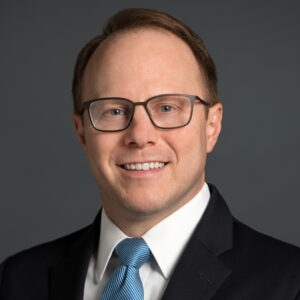Environmental Alert
(by Lisa Bruderly and Gary Steinbauer)
Another district court has weighed in on the continuing debate as to whether the Clean Water Act (CWA) regulates discharges to groundwater that then flow into a surface water. However, unlike previous decisions, the federal district court in Massachusetts has deferred to EPA’s Interpretive Statement on the subject, 84 Fed. Reg. 16810 (April 23, 2019), as its basis for holding that releases of pollutants to groundwater are categorically excluded from the CWA’s permitting requirements. Conservation Law Foundation v. Longwood Venues & Destinations, Inc., Civil Action No. 18-11821 (D. Mass. Nov. 26, 2019).
The Longwood Venues decision comes less than one month after the U.S. Supreme Court heard oral argument in the County of Maui v. Hawai’i Wildlife Fund matter, a pending case addressing this same subject. With the highly anticipated County of Maui decision expected in the summer of 2020, the decision in Longwood Venues provides defendants in citizen suits with a new basis for contesting alleged CWA liability for discharges that travel through groundwater before reaching a jurisdictional surface water. Neither the United States nor any other party in the Supreme Court’s County of Maui case has argued that EPA’s Interpretive Statement is entitled to deference as a reasonable interpretation of the CWA. Rather, these parties contend that the CWA unambiguously provides that discharges to groundwater are not within its scope. Reliance on the Interpretive Statement injects new fodder into the ongoing debate and litigation over the scope of the CWA’s National Pollutant Discharge Elimination System (NPDES) permit program.
In Longwood Venues, an environmental group sued the owner of a beach club located in southern Cape Cod, claiming that sanitary wastewater released to the groundwater from the club’s onsite wastewater treatment plant was an unpermitted discharge under the CWA. After undergoing treatment, the club’s sanitary wastewater is reportedly deposited into 22 perforated concrete leaching pits surrounded by crushed stone, which, at their bottom elevation, are four feet above the highest groundwater elevation. The parties agreed that it takes approximately 45 to 223 days for the undissipated nitrogen from the treated sanitary wastewater to reach a harbor located 100 to 500 feet from the wastewater treatment plant. A key fact in Longwood Venues is that the leaching pits are regulated under a state-issued groundwater discharge permit.
Like the County of Maui case, the facts in Longwood Venues included an intentional discharge of sanitary wastewater into the ground that could be traced to a jurisdictional surface water. The court in Longwood Venues, consistent with County of Maui, had little difficultly concluding that the perforated leaching pits were “point sources” under the CWA. Furthermore, the Longwood Venues court held that it did not see any meaningful difference between the pits and a “well” or “container,” both of which are listed as examples in the CWA’s definition of “point source.” Also, nitrogen from the leaching pits is “measurable to a high degree of accuracy,” persuading the court that the pits are “discrete” point sources. We note that the court did not find a prior categorization of the leaching pits as non-point sources in an EPA-approved total maximum daily load to be dispositive on the “point source” issue.
Notwithstanding its “point source” determination, the Longwood Venues court ultimately held that the CWA does not regulate discharges to groundwater that are hydrologically connected to a jurisdictional surface water. The court used the familiar Chevron agency deference test to determine whether the CWA was ambiguous on the issue of whether discharges to groundwater are regulated and whether the Interpretive Statement is an agency action worthy of deference. The Longwood Venues court was concerned with the “nearly limitless reach” of the CWA if it adopted the Ninth Circuit’s theory that CWA liability extends to groundwater discharges that reach surface water. See Hawai’i Wildlife Fund v. County of Maui, 886 F.3d 737 (9th Cir. 2018). Relying on the CWA’s text, legislative history, and purposes, the court held that the CWA is ambiguous on whether it regulates discharges of pollutants into groundwater that ultimately reach a jurisdictional surface water. Although EPA had no legal obligation to do so, its use of full notice-and-comment procedures before publishing the Interpretive Statement in the Federal Register was a deciding factor in the Longwood Venues court’s finding that the Chevron agency deference doctrine applied, even though the Interpretive Statement is at odds with “EPA’s previous, longstanding interpretation” of the CWA.
The Longwood Venues court concluded that EPA’s Interpretive Statement was reasonable. Interpreting the CWA to categorically exclude discharges to groundwater avoided an interpretation of the CWA that would cause “unreasonable regulatory compliance burdens on millions of citizens” who own and operate on-site septic systems. The court also found that it was permissible for EPA to prioritize the statutory purpose of preserving and protecting states’ responsibilities to regulate surface water. Lastly, the Longwood Venues decision closed with several fact-specific determinations. For example, the fact that the leaching pits were regulated under a state-issued groundwater permit illustrated to the court that CWA regulation was unnecessary to protect surface waters. Ironically, the court cited the plaintiff environmental group’s success in other CWA litigation forcing EPA to address nitrogen pollution in the harbor and Cape Cod generally, as another reason for concluding that a CWA discharge permit was unnecessary.
Babst Calland will continue to track and evaluate the Interpretive Statement, the County of Maui case, and citizen suit litigation over whether the CWA regulates discharges to groundwater. For additional background information, please see our past Environmental Alerts covering related topics on our website. If you have questions about the Interpretive Statement or how recent court decisions could impact your operations, please contact Lisa M. Bruderly at (412) 394-6495 or lbruderly@babstcalland.com or Gary E. Steinbauer at (412) 394-6590 or gsteinbauer@babstcalland.com.

